12 Ways To Add More Flavor To Roast Chicken
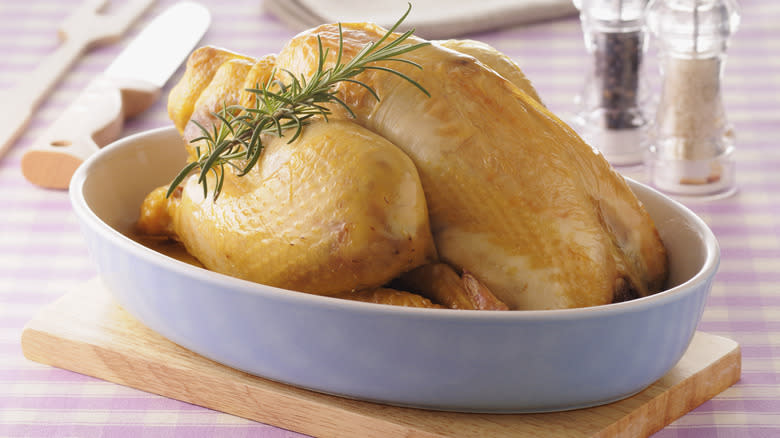
Roast chicken is comfort food at its finest. Unfortunately, many people are intimidated by the prospect of roasting a whole chicken — especially since when done incorrectly, roast chicken can be undeniably bland and flavorless. No one wants to go to the time and effort of roasting a whole bird just to have it turn out tasting less than exciting. The good news is, with a few tips and tricks, making a flavorful roast chicken is easier than you might think. It's also a great culinary skill to perfect because roasting a chicken is an easy, affordable way to feed a crowd. If you don't have a lot of mouths to feed, roast chicken is a great thing to have on hand in the fridge to prep easy lunches or quick dinners.
There are two main components to making a flavorful roast chicken: understanding the proper technique and using the right ingredients. We're here to help you master both aspects, so you'll never have to worry about your roast chicken tasting bland again. There are several methods you can use, so pick the tips and tricks that speak to your preferences and tastebuds. Roast chicken is extremely versatile, and the world is your oyster in terms of making it your dream dish. If you follow the advice below, you might find yourself adding roast chicken to your weekly meal rotation before you know it.
Read more: 12 Different Ways To Cook Chicken
Put Freshness First

First things first — please don't use expired chicken. You're trying to make a delicious meal, not give everyone food poisoning. Now that we've stated the obvious, we can move on to discussing why using a fresh bird will impact the quality of your roast chicken. If you want the most flavorful finished product, you need to go beyond simply checking the expiration date of your chicken.
In a perfect world, your chicken would essentially go directly from farm to table. In reality, that's rarely possible, but you can still take steps to set your roast chicken endeavor up for success. When you're selecting a chicken at the grocery store, the color of the meat can tell you a lot about its freshness. Per Healthline, fresh chicken should be pale pink in color, and you should steer clear of any meat that looks gray, yellow, or green. You shouldn't be able to detect any odor, and your chicken shouldn't feel slimy or sticky.
Once you've brought your chicken home, cooking it the same day is ideal. If you can't swing roasting your chicken that night, don't wait more than two days to start the roasting process. Once you roast your chicken, you won't be in as much of a race against the clock, which means you'll have time to enjoy the leftovers (if there are any).
Focus On Quality Over Quantity
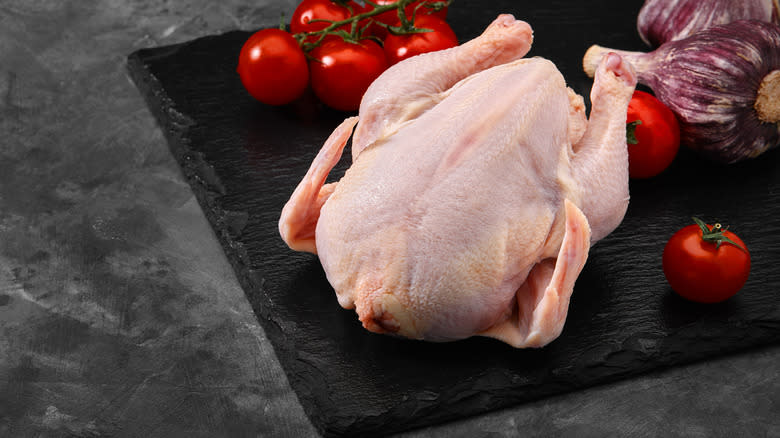
When it comes to choosing the most flavorful chicken, bigger isn't always better. If your main goal is simply to feed a crowd in an economical (and admittedly, relatively tasty) way, then you can, by all means, opt for the biggest bird you can find. However, if making the most flavorful roast chicken possible is your prerogative, you're probably better off with a smaller specimen.
The ideal size for an evenly roasted whole chicken is about 3½ to 5 pounds, so look for birds in that weight range as you shop. Using a smaller bird means the meat will roast more evenly, so you won't have to worry as much about some pieces turning out too dry and others turning out undercooked. The meat from a smaller bird will be juicer, more tender, and more flavorful. Smaller birds can be tricky to find, so you might have to venture to a more specialized store than you would if you were looking for a jumbo chicken. Using a smaller chicken is also great if you're just cooking for yourself. Trust us, a large bird yields a lot of meat, and even the most delicious leftovers lose their appeal after a few meals. We're big fans of organic chicken, but do what makes sense for you, your budget, and your priorities.
Choose Your Brine Wisley
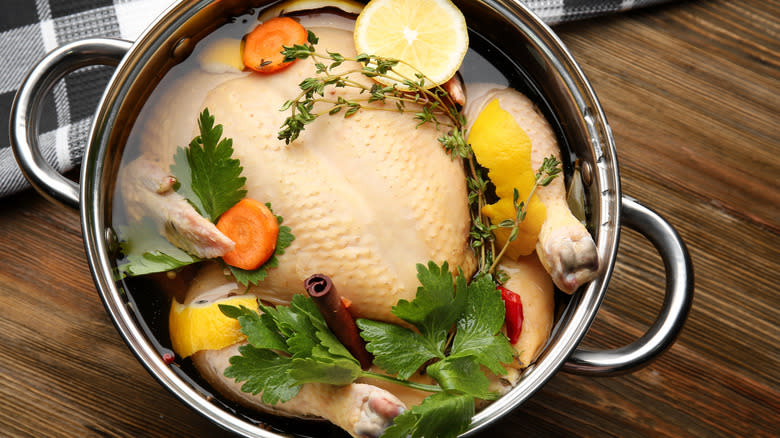
Now that you know how to choose the perfect chicken, it's time to learn a few preparation methods that will help you prepare the most flavorful dish. Let's start with the brine. If you were to just stick a cleaned raw chicken into the oven without prepping it first, the result would be extremely bland — which is where brining comes into play. You have two basic options here: wet brining and dry brining.
Wet brining involves letting the chicken soak in a mixture of water, salt, and sugar. For best results, make sure the entire bird is submerged, and don't rush the process. Dry brining involves coating the skin with a salt and spice mixture. It takes less time so it's a good option to have if you're in a rush. People have different opinions on which method is better, but we lean towards wet bringing since it makes the meat more tender. If you ask us, it's well worth the extra time if you're looking to boost flavor. Upgrading from a basic dry brine to a wet bring can help you take your roast chicken to a whole new level. You can play around with different types of brines until you find one that speaks to you.
Make And Use Flavored Butter
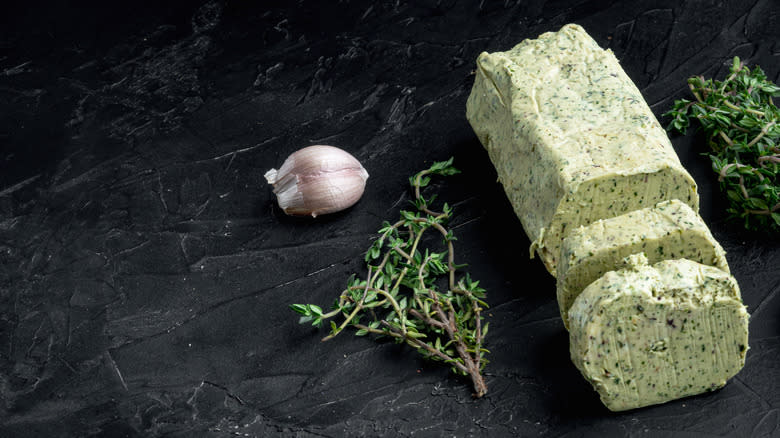
Plenty of roast chicken recipes, like this herb roasted chicken, call for placing butter on and underneath the skin before roasting. While plain butter is definitely tasty on its own, using flavored butter will totally change the game. Making your own flavored butter is easy. All you need to do is add your favorite herbs, aromatics, and spices to softened butter and then mix. Try using rosemary, garlic, shallots, chives, etc.
When you're making flavored butter, it's important to think about the other flavors you plan to incorporate into your roast chicken to ensure nothing clashes. We also recommend making more flavored butter than you need to coat the chicken. This way, you can serve it with bread or with your sides when you're ready to eat your meal. Flavored butter is also a delicious homemade item to keep in your fridge, so taking this step is an all-around culinary win. Don't blame us if you start adding it to everything!
Treat Your Chicken Like A Turkey
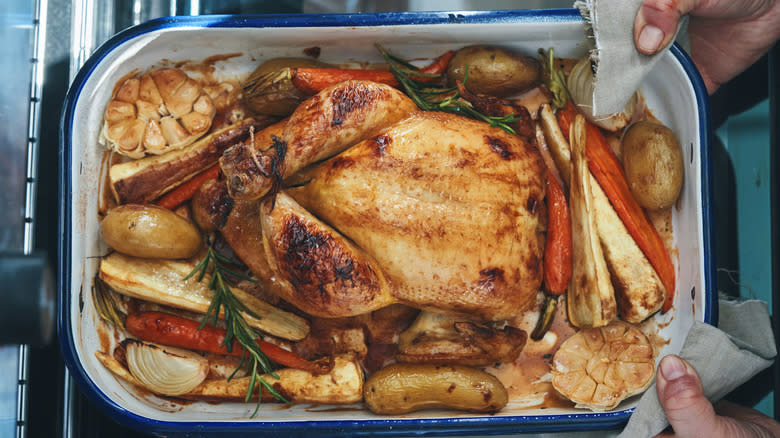
While roasting a chicken and a turkey are different animals (pun intended), taking a page from the Thanksgiving favorite's book can be helpful if you want to add flavor. We're talking about stuffing the cavity of your chicken before roasting just like you would a turkey. If you're not stuffing your bird, you're missing out on a huge flavor opportunity. Stuffing your bird helps impart flavor into the entire chicken, as the flavors of the stuffing will be absorbed into the meat.
As with a turkey, you can either stuff a chicken with herbs and vegetables just to add flavor (which won't be eaten), or you can make a stuffing that's meant to be consumed with the final dish. We like to save the edible stuffing for Turkey Day and fill our birds with things like lemon, carrots, celery, onion, herbs, and, garlic. When you're done roasting, you can use the filling to make a delicious stock or gravy. Whichever way you decide to go, the bottom line is that for more flavor, start stuffing your roast chicken.
Learn How To Spatchcock Correctly
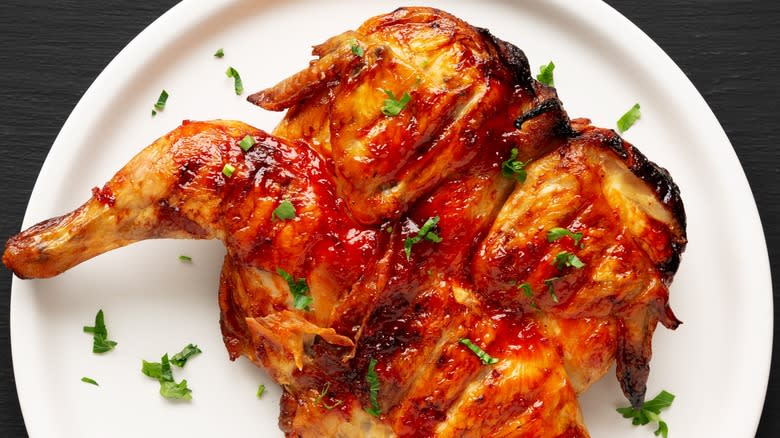
Adding flavor to your roast chicken is about more than just adding the right ingredients and cooking it properly — prepping your bird before you start cooking is also crucial. All this is to say that you need to learn how to spatchcock a chicken before you roast it. Spatchcocking poultry means more space in your oven, and it also means a more flavorful final meal. Many people are scared of the idea, but there's no need to be!
As intimidating as it sounds, spatchcocking, sometimes called butterflying, just means removing the backbone of the chicken, pressing down, and cracking the breast bone. Essentially, it's a fancy term for flattening your bird before you cook it. This method allows the meat to cook more evenly since all the pieces will be a more similar distance from the heat source. Luckily, you don't need any fancy cooking equipment to nail this technique. All it takes is some sharp kitchen shears and some practice.
Go Heavy On The Garlic
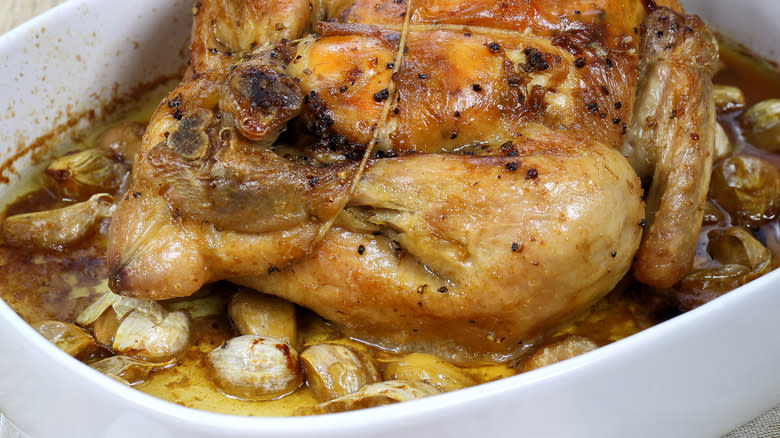
You don't need us to tell you that everything tastes better with garlic — and you should apply this well-known piece of cooking advice to your roast chicken. We don't just mean adding a little garlic powder to your spice blend, either. We're talking about using multiple cloves of this flavor powerhouse.
If you want to sneak in garlic the next time you roast chicken, there are a variety of ways to do so. You can simply finely chop a few cloves and put them underneath the skin, create a garlic paste for rubbing down your bird, or make garlic marinade. You can also stuff the cavity with whole cloves before you put it in the oven. You can also add a whole head of garlic to your roasting pan if you don't want to flavor your chicken directly. No matter which approach you decide to take, the bottom line is that if you're going to roast a chicken, you need garlic. Just be sure to have some mints on hand after your meal!
Customize Your Own Dry Rub
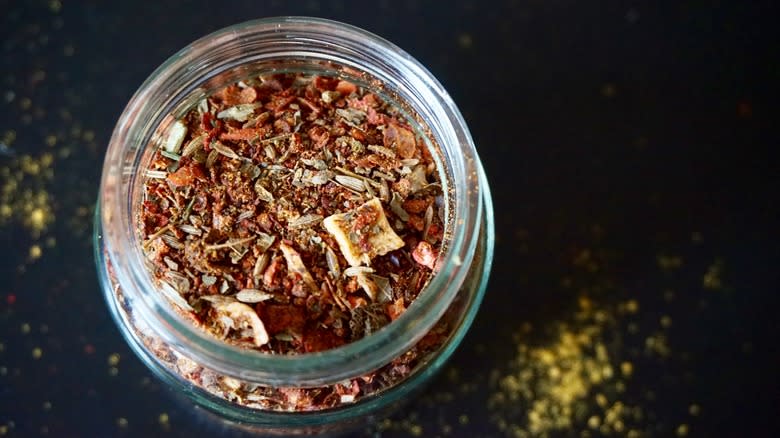
If all you do is sprinkle some salt and pepper on your chicken and call it a day, don't be surprised when it comes out lacking flavor. Of course, salt and pepper are essential, but if you're looking for flavor, spices are essential — and making your own dry rub allows you to nail the exact type of flavors you enjoy.
Making your own dry rub means you can lean into smokey, spicy, or herbaceous flavors as much as you please. Plus, when you make your own, you have control over what's in your blend, so you can use higher-quality ingredients than you might find in a pre-made mix.
Common dry rub ingredients include paprika, garlic powder, onion powder, dried rosemary, and cayenne pepper, but don't be afraid to think outside the box. If you aren't using a recipe, just remember to keep balance in mind, and to always start with small quantities of each spice (you can always add more). At the end of the day, the best way to season roast chicken is to think about the flavors you love.
Don't Forget The Citrus
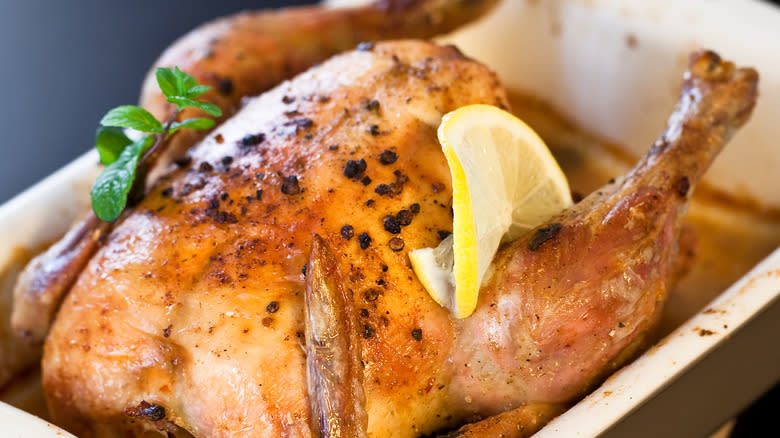
Citrus is a powerful component in countless culinary contexts. It adds brightness and acidity to everything from cocktails to salad dressings to desserts. This cooking essential is also crucial for making a succulent, flavorful roast chicken. Citrus practically fights blandness, so don't forget it the next time you want to put your oven to use.
Just as with garlic, there are many ways to incorporate citrus into your roast chicken recipe. You can stuff your chicken with lemons and oranges, use citrus juice as part of a baste, or even use citrus zest in your brine. Adding a squeeze of lemon over the final product can also be a nice touch if you really like acidity.
Of course, delicious food is all about balance, so don't go overboard. Citrus is powerful, and you don't want it to overwhelm the other flavors in your dish. Remember to strain the seeds if you're using the juice, and don't grate too far into the rind if you're using the zest (the pith is extremely bitter).
Make It Spicy
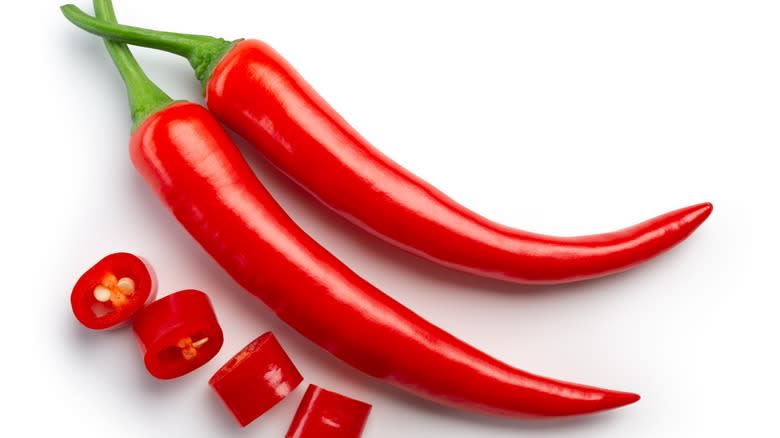
If you're looking for a surefire way to add flavor, consider adding spice (and by that, we mean heat) to your roast chicken. If you think roast chicken is always bland, you may just need to (literally) spice things up. Spicy food lovers will be happy to know that roast chicken can be the perfect vehicle for spice.
This roast chicken with paprika and pepper recipe is the perfect example of how you can make your roast chicken more flavorful with a few simple, spicy additions. If you want an even spicier dish, you can add chilis or hot peppers. You can also add spice after you finish cooking your bird by serving it with your favorite hot sauce or chili oil. The sky is the limit when it comes to spice, so don't be shy. Plus, eating spicy food is the perfect excuse to indulge in some cooling ice cream for dessert.
Don't Forget The Sauces
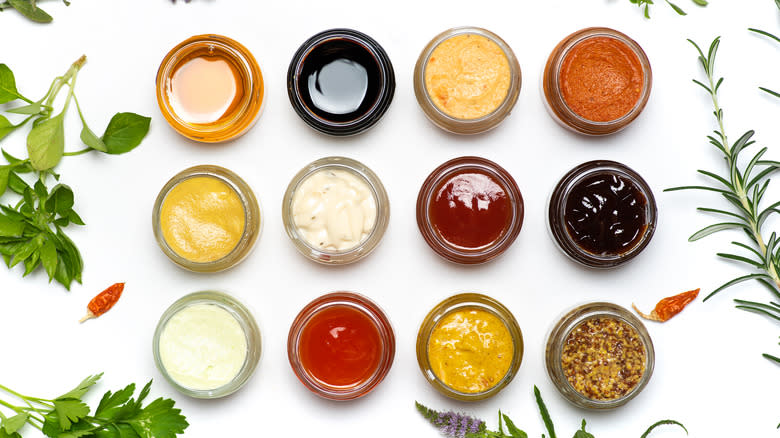
Even the most flavorful roast chicken can usually benefit from a flavorful sauce. Not only will serving your roast chicken with a tasty sauce add flavor, but doing so will also help keep everything nice and moist. There are so many sauce options out there that our main piece of advice (and we've said this before) is to think about your favorite flavors. Keeping the side dishes you plan to serve with your chicken can also help you determine your sauce direction.
Another great thing about sauces is that if you find yourself with leftovers, a sauce can help bring them back to life. There's nothing worse than eating leftovers that are dry, bland, and less tasty than the original dish, so sauces can really save you.
While making your own sauce is always great, you can also buy pre-made sauces if you feel like roasting a whole chicken is enough of a culinary adventure. We're big fans of chimichurri, pesto, and green goddess dressing. Stocking your fridge with a variety of roast chicken-friendly sauces will ensure you never get bored.
Seek Global Inspiration
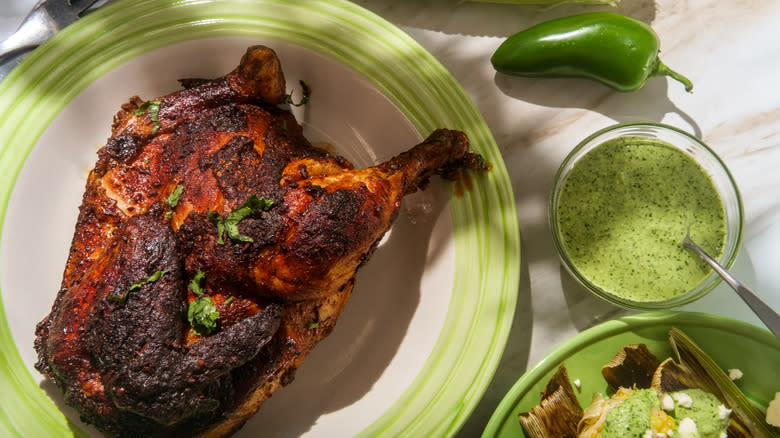
Think about it this way: If you feel like you're in a dining rut, sometimes the best thing to do is indulge in a different type of global cuisine. The same mindset can be applied to roast chicken. Every type of cuisine features unique herbs, spices, and flavors, and you can (and should) add them to your roast chicken.
For example, you can try an Indonesian roast chicken recipe that features coconut milk, fish sauce, and turmeric. Or, go for a whole-roasted Peruvian-style chicken recipe that features a delicious green sauce. Whatever your favorite type of cuisine may be, there's probably a way to make a roast chicken that uses it as inspiration.
If you think about a roast chicken as a blank canvas, you'll probably be more likely to branch out — which will yield delicious, flavorful results. Once again, you shouldn't forget about the sides, and you can also use your global cuisine of choice for inspiration. If you're making the Indonesian version, try serving it with rice. If you're going for the Peruvian-style chicken, try serving it with an avocado salad.
If you roast chicken regularly, challenge yourself to try a new globally-inspired option each time. It's easy to fall back on go-to recipes, and sometimes you have to make yourself think outside the box.
Read the original article on Tasting Table.

